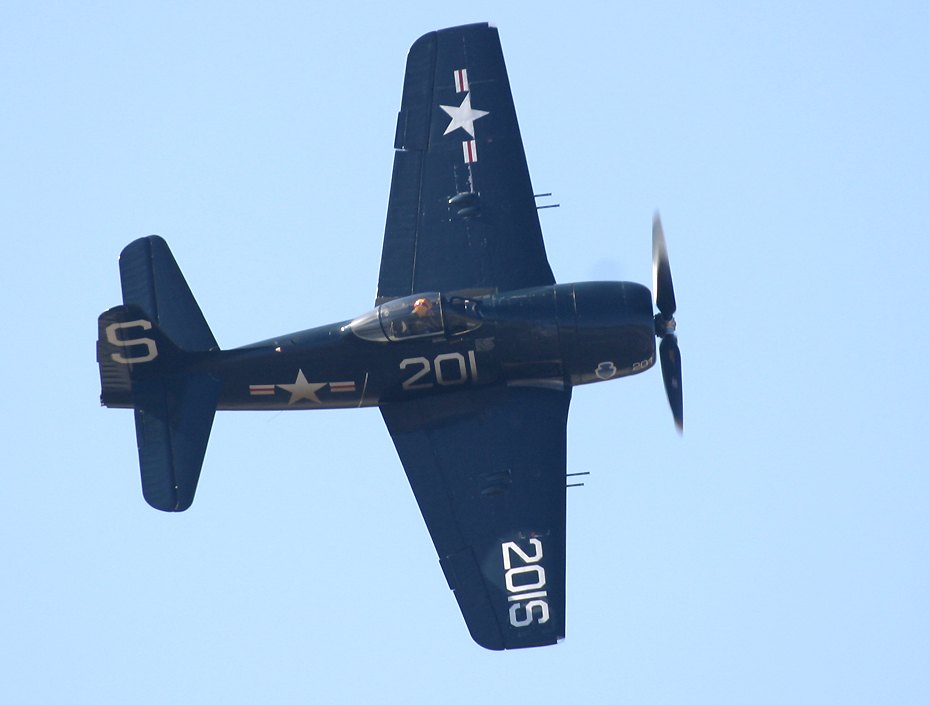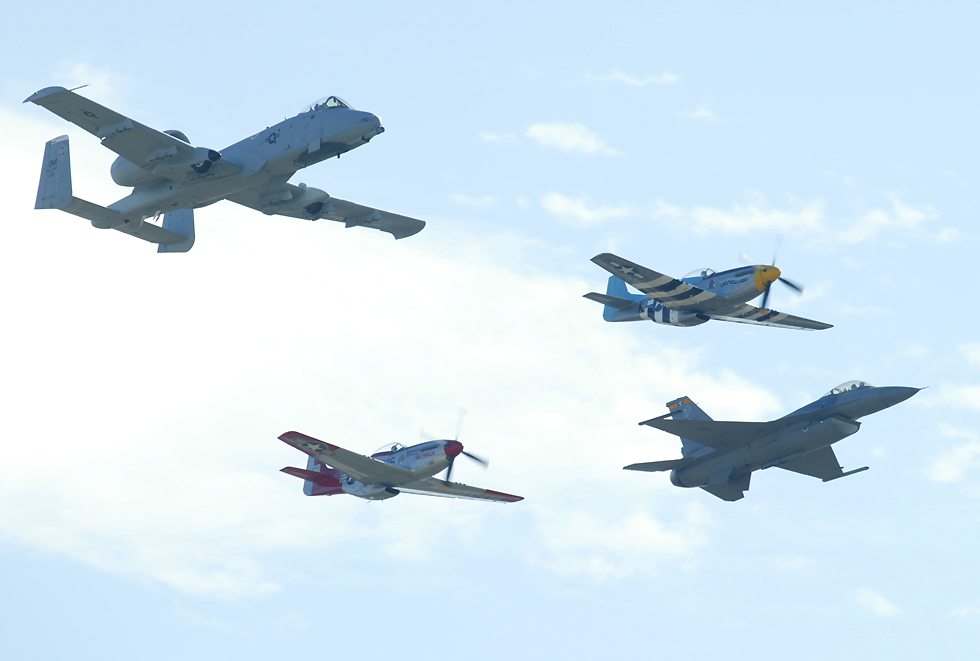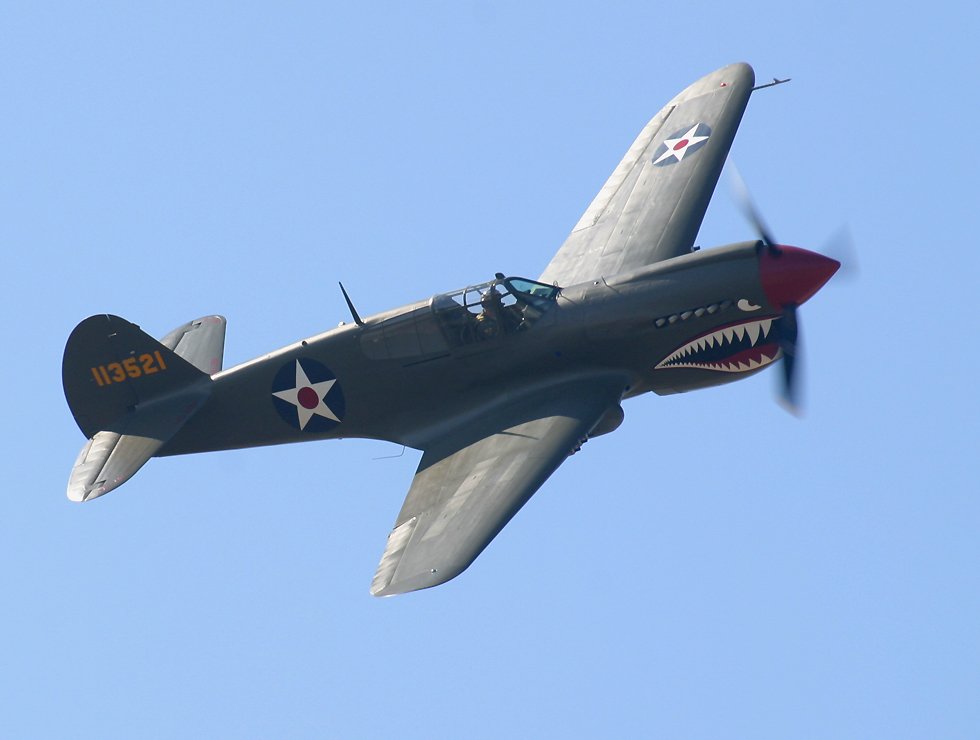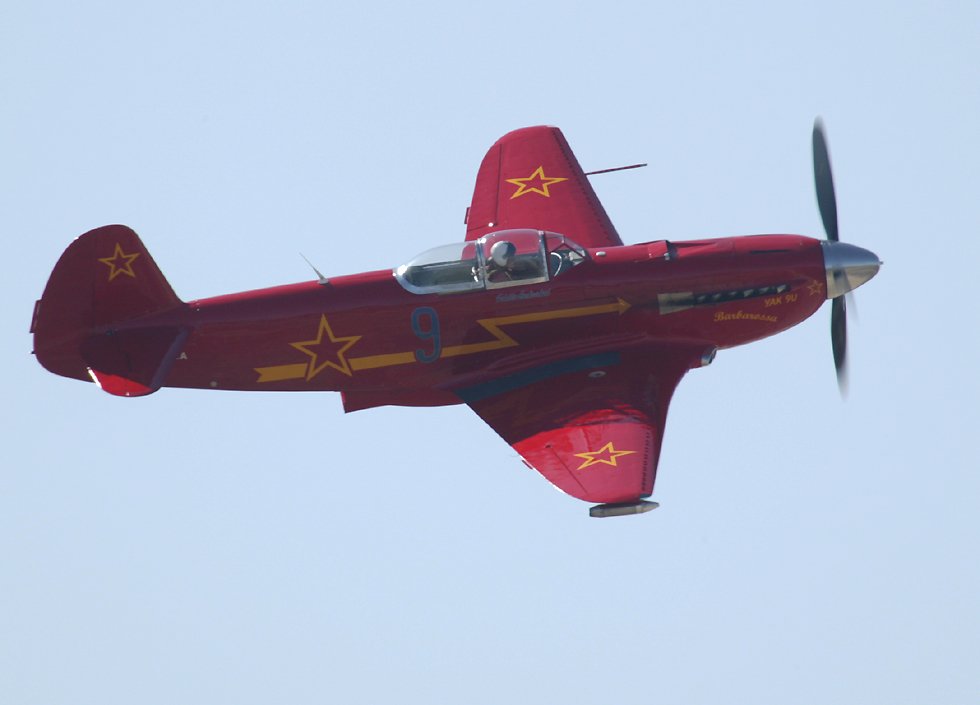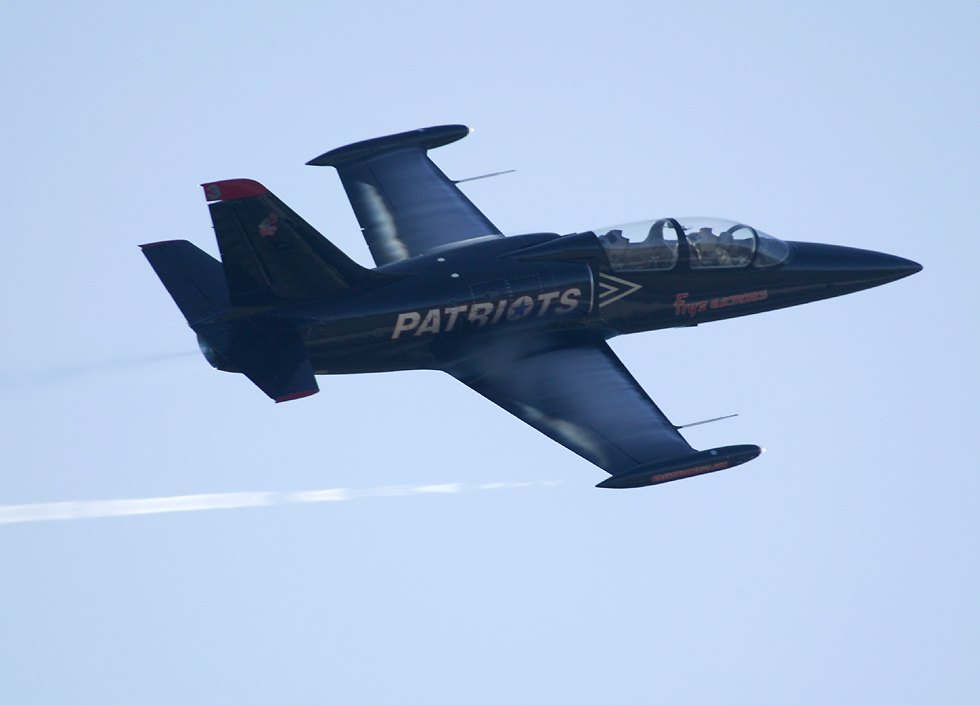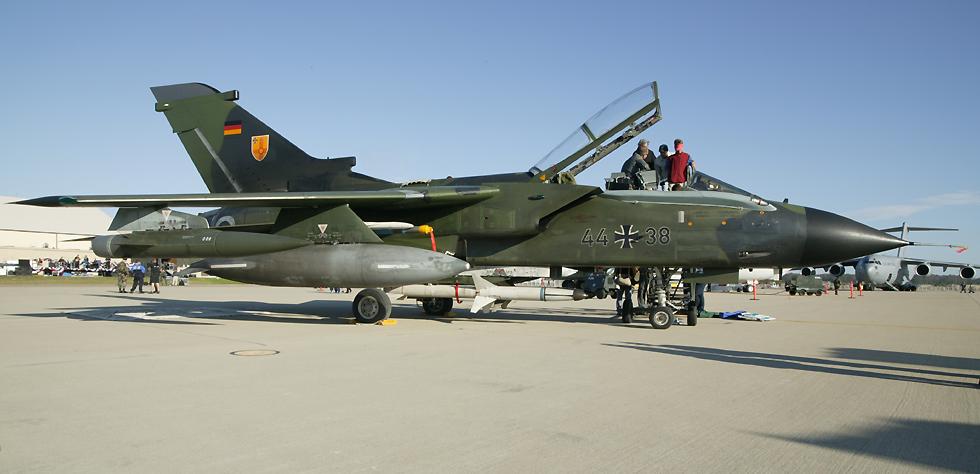Highlights of the 2004 Vandenburg Airshow
|
The Vandenburg Airshow is held at Vandenburg Air Force Base, an hour or so north of Los Angeles on the California coast. Unfortunately, this is another one of those "mystery" shows whose organizers don't see any need to tell people what aircraft are expected. Perhaps partly for that reason, it wasn't very crowded so there was plenty of space to set up anywhere you wanted. The sky was beautiful, but the light was horrible, with the sun in your face throughout the display. There's space for the aircraft to bank around the crowd area both on the left and the right, but most performers didn't do this tightly enough to allow many good banking shots. There were good individual displays of modern military aircraft by an A-10 Thunderbolt II, an F-16 Fighting Falcon and this F/A-18C Hornet but they were a little too far from the crowdline for good photography. The F/A-18C is distinguishable from the F/A-18A by the two little bumps behind the canopy, which contain some electronics. |
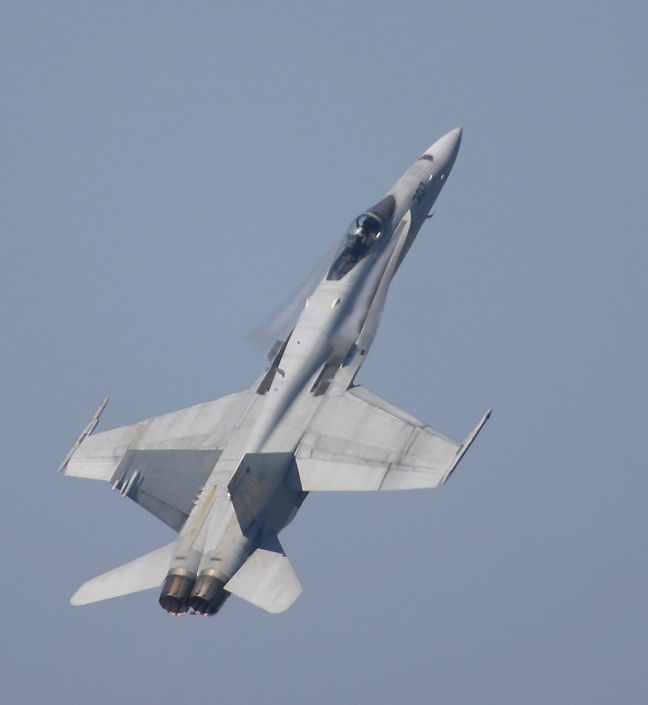 |
|
Most people can't get too excited by training planes, but I thought this display was probably the single best thing I saw at the show. On the bottom is a world war two T-6 Texan (or more accurately an SNJ, since it's in US Marines colors) and on top is the most recent training plane to enter the American inventory, known here as a T-6A Texan II, in honor of its earlier namesake. The Texan II isn't actually an American aircraft, it was designed by the Swiss company Pilatus, which calls it the PC-9. I saw one of these fly in the Royal International Air Tattoo in the UK in 2002, which was one of its first outings. In the USA the Beech company, which is now part of Raytheon, claims credit for the Texan II, it's quite a trend in America for foreign aircraft to be fielded as if they were produced by a local company, perhaps to decrease the ever-present risk in America of politicians objecting to the planes on the dubious grounds of patriotism. |

|

There were 4 or 5 different types of helicopter on static display at this year's show, and two UH-1 "Hueys" did displays, one winching people from the ground while still in flight, and this one with a water bucket. If you want to see a Huey and water bucket in action during a real fire, then visit my Bound Brook Flood Helicopters page, which will open in a new window. |
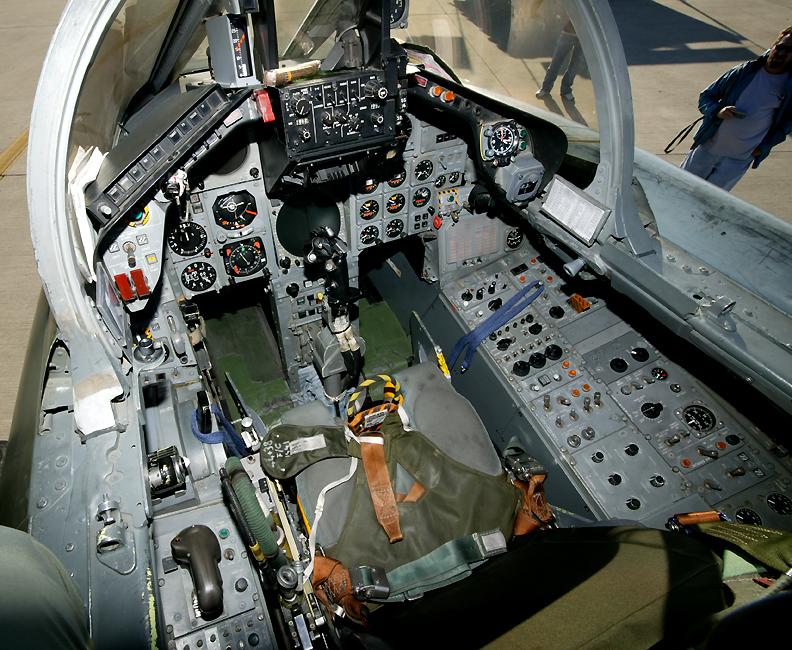
It's not well known in America, but the German Air Force has a large number of people stationed at Holloman Air Force Base in New Mexico, it's very convenient for them because there's so much empty space out there for them to do their combat training. The two German pilots at the show are both instructors, they weren't at Holloman during the recent PhanCon event, instead they were at Tyndall. They were allowing people to sit in the cockpit, something I don't recall being allowed in American fighter aircraft! Unfortunately foreign aircraft like this Tornado don't get much opportunity to fly at American events, one of the very few exceptions being the Holloman airshow. As you can see, there's no "glass cockpit" here, just lots of analog dials and switches! Of course this is the pilot's cockpit, the navigator's cockpit behind him has a few screens, but nothing like a more modern military aircraft. The yellow and black loop at the front of the seat is the handle to activate the ejection seat, presumably they had that deactivated at the show. I'm not sure what the triangular looking thing on top of the seat is, perhaps the pilot's Lederunterhosen? |
|
This is an MC-130P "Combat Shadow" Hercules, which is used for clandestine operations, which usually carried out at night. Although this is an air force plane, it has the large pods under the wings to allow "probe and drogue" refuelling of other aircraft - which in this case usually means helicopters. The nose, however, has nothing to do with refuelling, it's more of a testimony to the versatility of this type of aircraft, which entered its fiftieth year of service this year (a fifty year old Hercules, the oldest one still flying, did a firefighting water drop at the Prescott Air Fair a month or so before the Vandenburg airshow). This huge nose contains some type of powerful radar, and the black thing underneath isn't a nose goblin, it's probably a FLIR (forward-looking infrared) unit or something similar. Perhaps most interesting, though, are the four projections at the front of the nose. These are the remnants of "Fulton" air recovery equipment, which was used for a short period to rescue downed airman. Two metal rods, about 10 feet or more in length, were attached to the nose by those projections. In normal flight they were folded back along each side of the nose, but to perform a rescue they were moved forward to form a large "V" shape. The airman would use a helium bottle in his inflatable raft to inflate a balloon attached to a 450 foot (135 meter) long nylon rope, the other end of which was attached to a harness he wore. The Hercules would then fly at 150 miles an hour (240 km/h), hook the line between the rods and wrench the airman into the air. Crew members stationed at the open rear ramp would then snag the line and winch the crew member on board. It must have been one heck of a wild ride! You can read more about the Fulton system on this C-130 variants page, under the MC-130E/H section. |
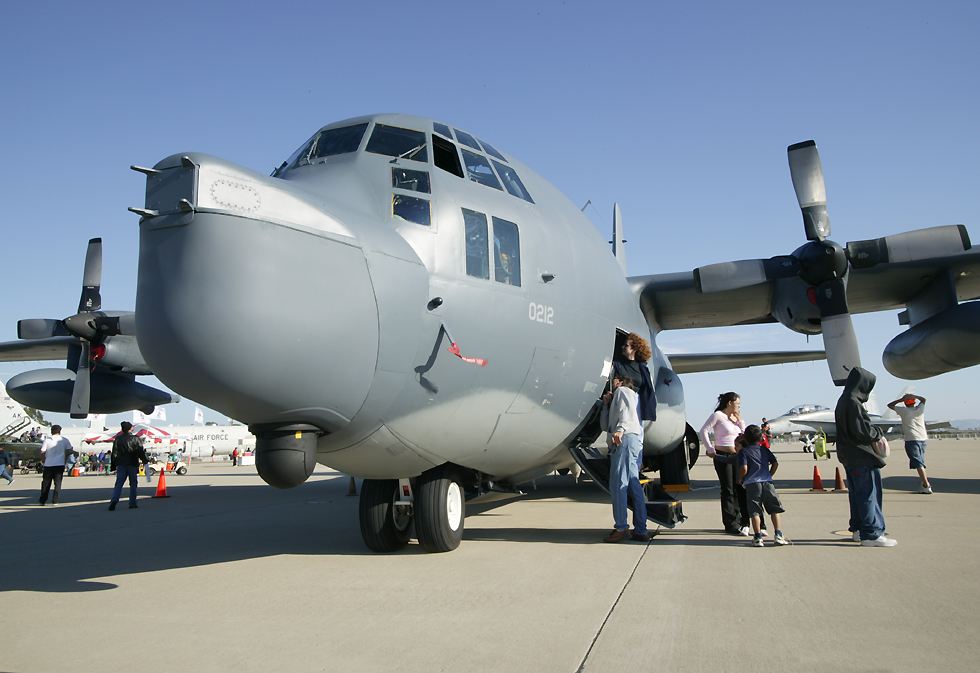 |
|
This F-117 Nighthawk "stealth fighter" was also on static display, with its engine outlets covered in black tape - a very belated decision by the Air Force that it wants to keep these outlets secret, especially considering how many tens of thousands of photographs of them people have already taken! There were also a couple of guards on duty around the aircraft, but not fielding machine guns as they have done at other shows. The four rods sticking out of the front of the Nighthawk aren't guns, they're pitot tubes and other equipment. You can see how strong the wind was from the way the ribbons are waving around! This particular aircraft is the oldest Nighthawk in existence, in fact it was originally a YF-117 test aircraft, but was later brought into operational status when budgets were cut and the number of aircraft to be built was reduced. Two F-117s have been lost that we know of, one that disintegrated during an airshow in Maryland in 1997 and one that was shot down over Serbia in 1999. There are only 54 of these aircraft now, 36 of which are on active duty, and they're all stationed at Holloman Air Force Base in New Mexico. |
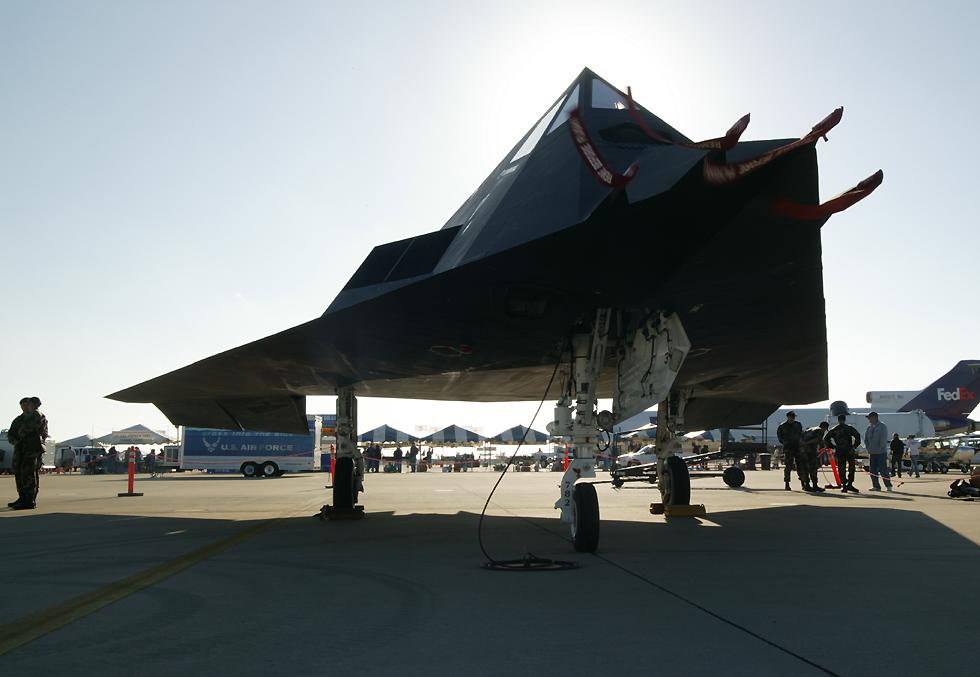 |
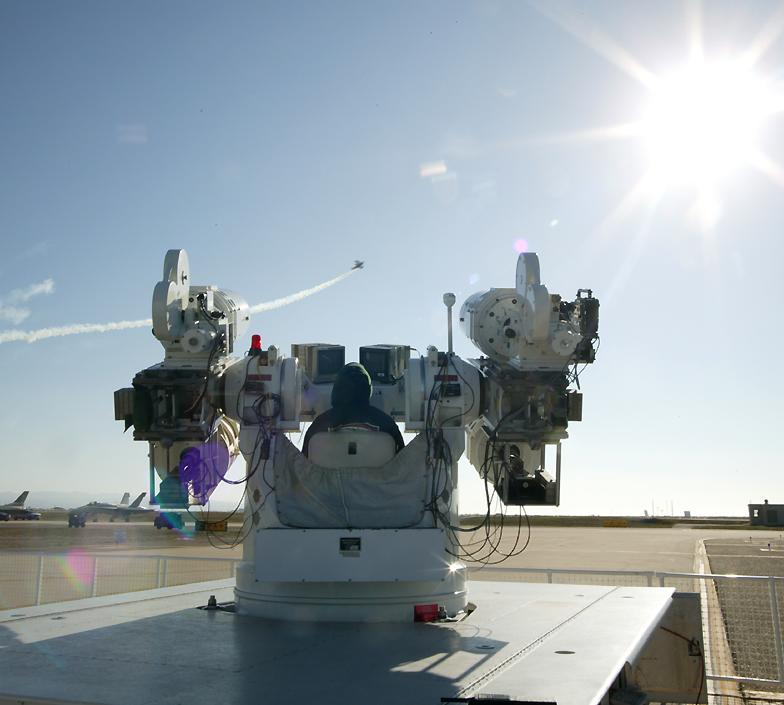
Vandenburg is not a good place to go if you suffer from compulsive camera and lens envy, because some of the guys there were packing pretty impressive rigs! This is one of the systems they use to track and record the missile launches which are the bread and butter of Vandenburg's day-to-day operations. As you can see from the guy's jacket, the strong wind made it pretty cold, I was dumb enough to leave my jacket in the car so I just had a thin polycotton shirt on, luckily it didn't become intolerable. More of a problem was that I left all of my spare batteries at home and the one that was in the camera showed up mostly empty when I first switched it on. So I could barely do any chimping and in the end I had to switch over to the 1Ds and stick a teleconverter onto the 100-400mm lens, which reduced me to one functional auto-focus point. With the batteries on that getting run down I had to make this a one day show, which at least allowed me to get home and pretend to have a rest - at least until the next two airshows, the Jackie Cochran airshow next week and the Nellis show in two weeks! |
